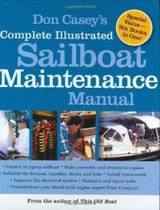 |
| Diesel bug is not this pretty – but it’s at least as inconvenient… |
Diesel Fuel Care – Biocides & Bugs
Here are the Can Opener’s notes:
Diesel bug clogs up your engine…
- Dead diesel bug causes the slime blocking up your fuel lines.
- Fuel contamination starts after the fuel arrives at the first middleman in the distribution chain.
- fuel + water + micro-organisms + a rise in temperature = microbial growth (diesel bug)
- Diesel bug sinks to the bottom of the tank… where the fuel intake is – and then blocks the primary filter to the engine.
- It also loosens in rough weather – so diesel bug is even more likely to block the engine when you may really need it.
- This doesn’t happen in petrol as petrol is not a nutrient – therefore no bugs.
Prevention
- Keep water out of the fuel tank because
- water makes the fuel hazy and
- provides an environment the diesel bug loves!
- If the fuel supplier is suspect then
- use a funnel or a ‘Baja’ filter or
- have extra tanks, let them stand for 2 days till the diesel bug sinks, and then decant the diesel into the main tank.
- Check you tank filler cap and leave tanks full before layup (to keep air out of the tanks).
- Run your engine for 30 minutes after layup and check separator regularly on your first trip.
- It’s a fuel preservative that kills bacteria and fungus. It will clean your system – it takes 12 hours to clear.
- Do a regular biocide treatment of 1/2 a dose every 3-4 tank fills.
- Add biocide before your winter layup.
- If you miss the ‘pre-wineter layup treatment’ then dilute and add it in the Spring, 24-48 hourse before your first use.
- it’s fairly cheap (costs about £3 /100litres in the UK)
- carry a small 12 volt electric fuel pump and filter
- practice connecting spare fuel can to suction of low pressure fuel lift pump
- this can fix diesel bug blockage in 10 minutes – which may be fast enough to restart your engine in time to avoid something really perilous!
Have you ever had diesel bug in your fuel?
Previously: see also Diesel Bug




